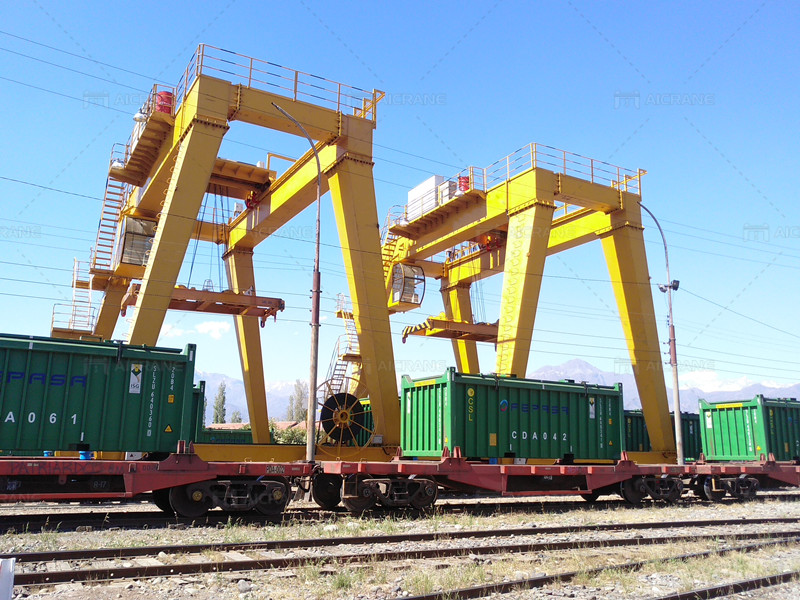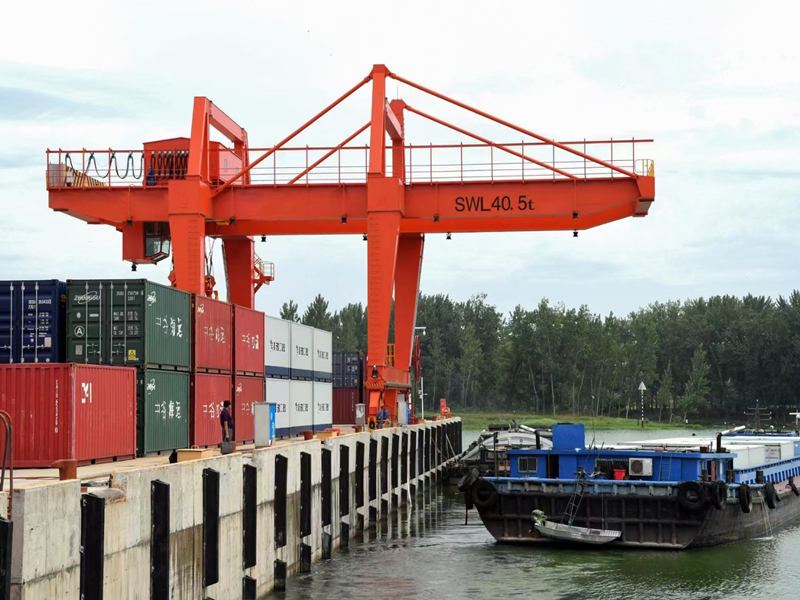Operating a gantry container crane requires skill, precision, and adherence to safety protocols. Gantry container cranes, also known as ship-to-shore cranes or quay cranes, are vital equipment in port and terminal operations for loading and unloading containers from ships. In this passage, we will discuss the step-by-step process of operating a gantry container crane effectively and safely.

Pre-Operation Inspection
Before operating the gantry container crane, conduct a thorough pre-operation inspection to ensure that the crane is in good working condition. Check for any signs of damage, wear, or malfunction in the crane structure, lifting mechanisms, electrical systems, and safety devices. Verify that all safety alarms, lights, and emergency stop buttons are functional.
Safety Briefing and PPE
Conduct a safety briefing for the crane operators and ground crew to review safety procedures, emergency protocols, and communication methods. Ensure that all personnel wear appropriate personal protective equipment (PPE) such as helmets, safety vests, gloves, and steel-toed boots while operating the gantry crane.
Positioning and Alignment
Position the gantry crane accurately along the quay or dockside to align with the containers on the ship. Use reference marks, guide rails, or GPS systems to ensure precise positioning of the rail mounted crane. Verify that the crane’s spreader or lifting device is aligned with the container’s twist locks or lifting points.

Startup and System Check
Start up the gantry crane’s control system and perform a system check to verify functionality. Test the crane’s movements, including hoisting, lowering, trolley travel, and gantry travel. Check the load capacity indicators, anti-collision systems, and limit switches to ensure proper operation.
Container Pickup
Use the crane’s spreader or lifting device to pick up containers from the ship’s deck. Position the spreader above the container and lower it gently until the twist locks engage securely with the container’s corners. Lift the container smoothly and avoid sudden movements or jerks.
Container Movement and Stacking
Once the container is lifted, maneuver the gantry crane to move the container horizontally along the quay or dockside. Position the container accurately over the designated stacking area on the terminal yard or truck chassis. Lower the container carefully onto the ground or onto other containers in the stack.
Safety Observations and Communication
Maintain constant communication with ground crew members, spotters, and other crane operators using radios, hand signals, or intercom systems. Observe safety protocols such as maintaining safe distances, avoiding overhead obstacles, and keeping the work area clear of personnel and vehicles.
Load Handling and Weight Distribution
Pay attention to the weight distribution and stability of containers during lifting and stacking operations. Ensure that containers are stacked securely and evenly to prevent tilting, shifting, or toppling. Use load charts and weight sensors to monitor the load capacity and center of gravity.
Emergency Procedures and Response
Familiarize yourself with emergency procedures and response protocols in case of equipment failure, power outage, or accidents. Know how to activate emergency stop mechanisms, evacuate personnel safely, and communicate with emergency services if needed. Conduct regular drills and training exercises for emergency scenarios.
Post-Operation Inspection and Maintenance
After completing crane operations, conduct a post-operation inspection to check for any damage, wear, or abnormalities in the crane and lifting equipment. Report any issues to maintenance personnel for prompt repairs and maintenance. Follow scheduled maintenance procedures, lubrication schedules, and component inspections to ensure the gantry crane’s optimal performance and longevity. Get more information about maintenance from the crane manufacturer.
In conclusion, operating a gantry container crane requires careful planning, skillful execution, and strict adherence to safety procedures. By following the step-by-step process outlined above, crane operators can ensure efficient and safe container handling operations in port and terminal environments. Regular training, maintenance, and safety protocols are essential for effective gantry crane operations and overall terminal productivity.
